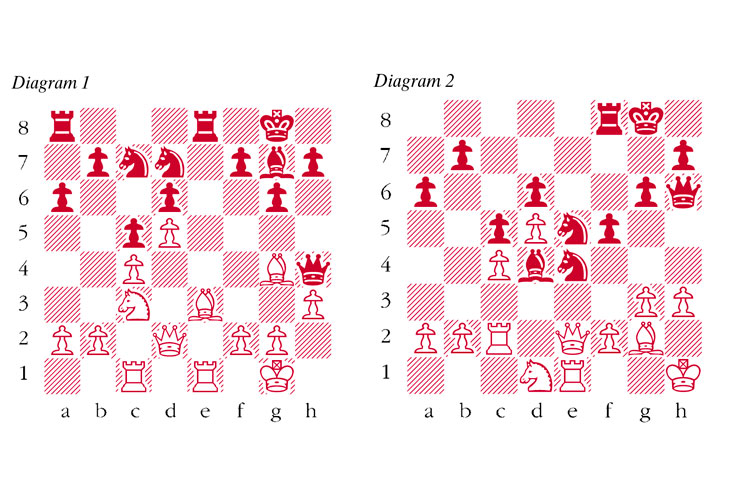The King’s Indian Defence is one of Black’s most dynamic reactions to closed openings such as d4/c4 and Nf3. Black sacrifices space in the centre but gains flank counter-chances on both wings in compensation. It has been a favourite of the pioneering Soviet grandmaster David Bronstein, who was followed enthusiastically by like-minded aggressors such as Mikhail Tal, Bobby Fischer and Garry Kasparov.
A new book, First Steps: The King’s Indian Defence by Andrew Martin (Everyman Chess), is an excellent introduction to this complex system. Notes to the following game are based on those in the book.
Brown-Mamedyarov: PRO League, chess.com 2018; King’s Indian Defence
1 d4 d6 2 Nf3 g6 3 c4 Bg7 4 Nc3 Nf6 5 e4 0-0 6 Be2 Bg4 The bishop on c8 is often a problem piece in Benoni and King’s Indian systems, so Black aims to exchange it off at the earliest possible opportunity. It is clearly playable and even really strong GMs use it from time to time as a surprise weapon. 7 Be3 Nfd7 8 Rc1 8 Ng1 Bxe2 9 Ngxe2 is played a lot here, when 9 … e5 10 0‑0 exd4 11 Bxd4 Nf6 12 f3 Nc6 13 Be3 gives White a slight edge due to his extra space. 8 … c5 9 d5 Na6 10 0-0 Nc7 11 h3 Bxf3 12 Bxf3 Re8 13 Be2 a6 14 Qd2 e6 14 … b5! looks good here, the tactics proving satisfactory for Black; e.g. 15 b3 (or 15 cxb5 axb5 16 a3 c4 17 f4 Qb8) 15 … Rb8 16 f4 bxc4 17 bxc4 Na8! 18 Rb1 Qa5 with equality. 15 Rfe1 15 dxe6 Nxe6 16 Qxd6 Nd4 17 Bg4 Ne5 18 Qxd8 Raxd8 19 b3 h5 20 Be2 Nec6 gives Black good compensation for the pawn. 15 … exd5 16 exd5 Qh4 17 Bg4 (see diagram 1) 17 … Rxe3 In a rapid game the players are often trying to find ideas which eat into the opponent’s clock. The position after the imaginative 17 … Rxe3 may be objectively good for White, but it’s not easy to play at all. Black gets an unassailable dark-squared bishop, use of the e5- and d4-squares and a strong initiative. 18 Qxe3 18 Rxe3 f5 is very unclear. 18 … Bd4 19 Qd2 Ne5 19 … f5 is also possible. 20 Nd1 f5 21 Be2 Rf8 22 Bf1 White is struggling to find ways to improve his position. 22 … Ne8 23 Kh1 Nf6 24 g3 Qh5 25 Bg2 Ne4 Meanwhile Black can play a whole series of easy moves and by now stands better. 26 Qe2 Qh6 This retreat is unnecessary. 25 … Ng4 is very strong. 27 Rc2 This allows a winning tactic. Returning material with 27 Rc3 was the only chance. (see diagram 2) 27 … Bxf2 28 Qxf2 28 Nxf2 Nxg3+ forks king and queen. 28 … Nxf2+ 29 Nxf2 f4 30 g4 f3 31 Bf1 Rf4 32 Kg1 Qh4 33 Re4 Qg3+ 34 Kh1 Rxe4 35 Nxe4 Qe1 White resigns
This year marks half a century since Mikhail Tal’s great victory in the 1959 Candidates tournament. More on this to follow.
Raymond Keene
King’s Indian

issue 29 June 2019




Comments